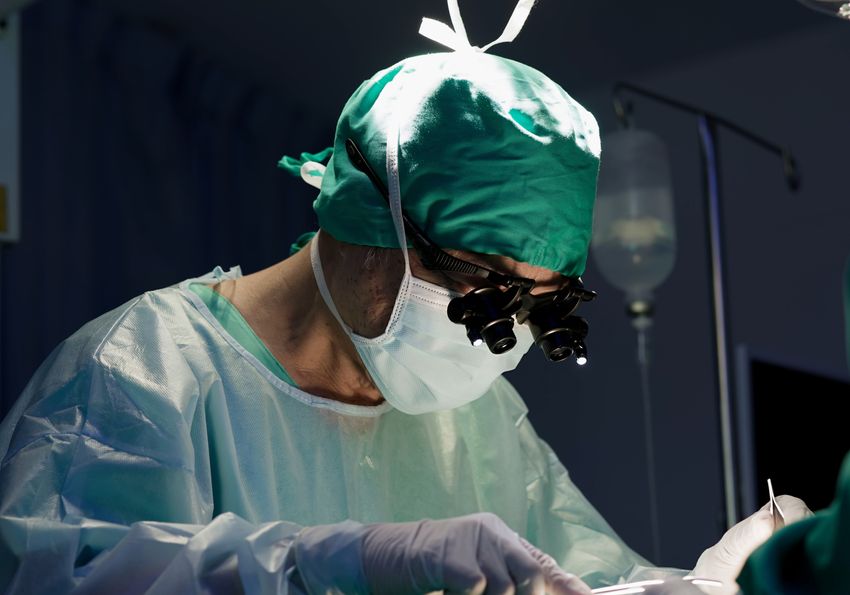

Minimally invasive strategies for treating brain disease can ameliorate patient symptoms, reduce complications, and improve quality of life.
iStock, vm
Normal pressure hydrocephalus (NPH) is a condition when cerebrospinal fluid (CSF) accumulates and puts pressure on the brain. An estimated 800,000 Americans are believed to have NPH, with symptoms potentially including gait disturbance, urinary incontinence, and cognitive decline. Without treatment, the disease can cause severe and irreversible damage. With treatment, symptoms are largely reversible, especially if administered early in the course of the disease. Unfortunately, misdiagnosis is common, as the symptoms of NPH are similar to Alzheimer’s disease and Parkinson’s disease.

Dan Levangie
President & CEO
CereVasc, Inc.
In this Innovation Spotlight, Dan Levangie, president and chief executive officer of CereVasc, discusses a new treatment strategy for NPH using an endovascularly implantable CSF shunt that minimizes invasiveness.
What is the current treatment for NPH?
The ventriculo-peritoneal (VP) shunt has been the standard of care treatment for NPH for over 60 years. Placing a VP shunt requires a surgeon to drill a hole in the patient’s skull and pass one catheter into a ventricle in the brain and another through the chest and into the abdomen. These two catheters are connected to a valve which allows excess CSF to drain from the ventricle into the peritoneal cavity.
The majority of properly selected patients with NPH experience symptom improvement after this surgery.1 However, adults who undergo it face a nearly 25 percent rate of complications within the first year after surgery, which can include infections, over-drainage, and catheter malfunction.2,3 Further, many patients are deemed ineligible for this treatment due to age, comorbidities, or potential complications and concerns associated with open brain surgery.
How does the eShunt® System improve this situation?
Unlike the standard of care, the eShunt System does not require drilling into or the passing of a catheter through the brain. Rather, using an endovascular approach, surgeons introduce a temporary delivery system through the femoral vein in the groin via a small incision and permanently place a 2-inch catheter at the base of the brain. After implantation, cerebrospinal fluid drains into the venous system to be reabsorbed by the body, closely mirroring the way CSF drains in a healthy individual.
In a recent study of patients with NPH treated with the eShunt System, 97 percent of patients (29 of 30) experienced improvement in their NPH symptoms. Post-surgically, patients remained in the hospital for an average of only 1.3 days, and in the 90 days following implantation, none experienced any serious adverse events related to the device.
These results suggest an improvement over traditional treatment for NPH, which is associated with a 25 percent rate of complications or hospital readmission within a year after surgery and an average hospital stay of three days.4 Shorter hospital stays are also expected to translate into lower costs for patients and hospital systems when compared with traditional brain surgery.
Were there any technical obstacles when designing the eShunt System?
When developing a potentially standard of care changing treatment that integrates new technology, challenges will always be present. With the eShunt System, our team considered similar advancements in heart valve surgery and aneurysm treatment, where traditional open surgeries have largely shifted to minimally invasive techniques that require a novel way of approaching disease treatment. The aim of the eShunt System was to design an implant that replicates the normal physiological process of draining excess CSF in individuals without hydrocephalus, and to place it in a minimally invasive endovascular fashion.
Are there any patient behaviors or activities during day-to-day life that could impact eShunt function?
After standard treatment with the VP shunt, patients with NPH may discover that simply changing their body position can cause over-drainage of their CSF, resulting in headache or even subdural hematoma. This is due to the delicate mechanism of the implanted valve that regulates pressure between the brain’s ventricles and the abdomen, which is adjusted as needed by a doctor using a magnet.
This is not the case with the eShunt System, which is equipped with a self-adjusting valve designed to prevent over-drainage, with the dual goal of enabling patients to move freely and reducing their need for hospital revisits.

The eShunt System provides an alternative to the ventriculo-peritoneal shunt for NPH and other conditions, and it may be feasible as a cell and gene therapy delivery route.
iStock, PonyWang
Are there any other applications for the eShunt System that you would like to highlight?
Recently, the eShunt System received FDA Breakthrough Device Designation for use in pediatric patients aged 12 and older with communicating hydrocephalus. This milestone was supported by research out of Texas Children’s hospital that concluded that 67 percent of pediatric patients aged 2 or older have appropriate anatomy to receive the device. A minimally invasive approach could have a profound impact for the pediatric patient population, as many children who are born with hydrocephalus will experience multiple shunt revisions in their lifetime with the current standard of care.5 The eShunt System may also provide an alternative to the VP shunt in patients with idiopathic intracranial hypertension, a condition that is also treated with CSF shunting or venous sinus stenting.
Excitingly, the eShunt’s ability to breach the blood-brain barrier in a minimally invasive way may also be supportive of administering gene and cell therapies for a host of other diseases of the central nervous system. We have conducted studies comparing the eShunt approach to traditional, more invasive methods of gene therapy delivery to the CNS and the results support this potential.6

Source link




